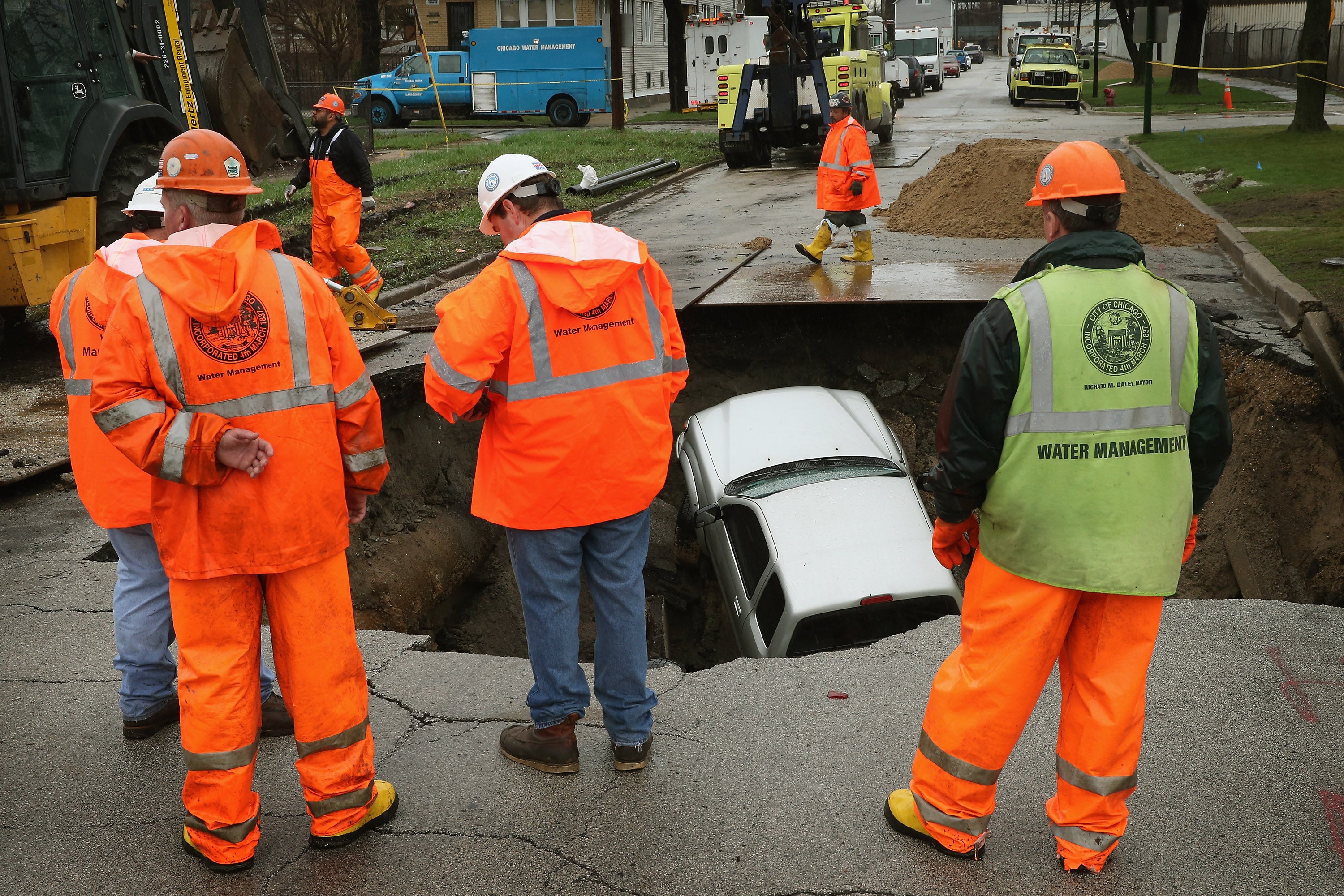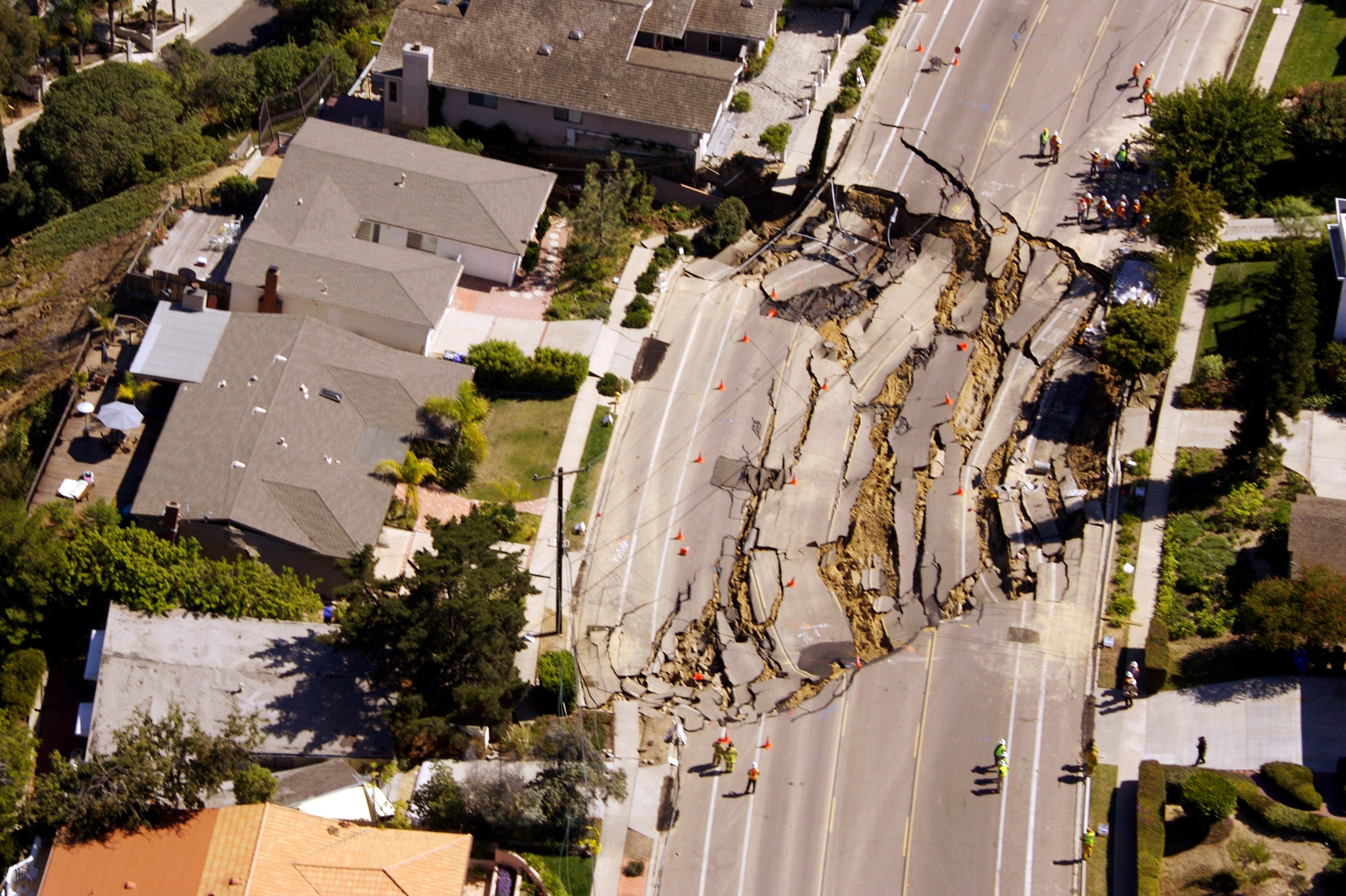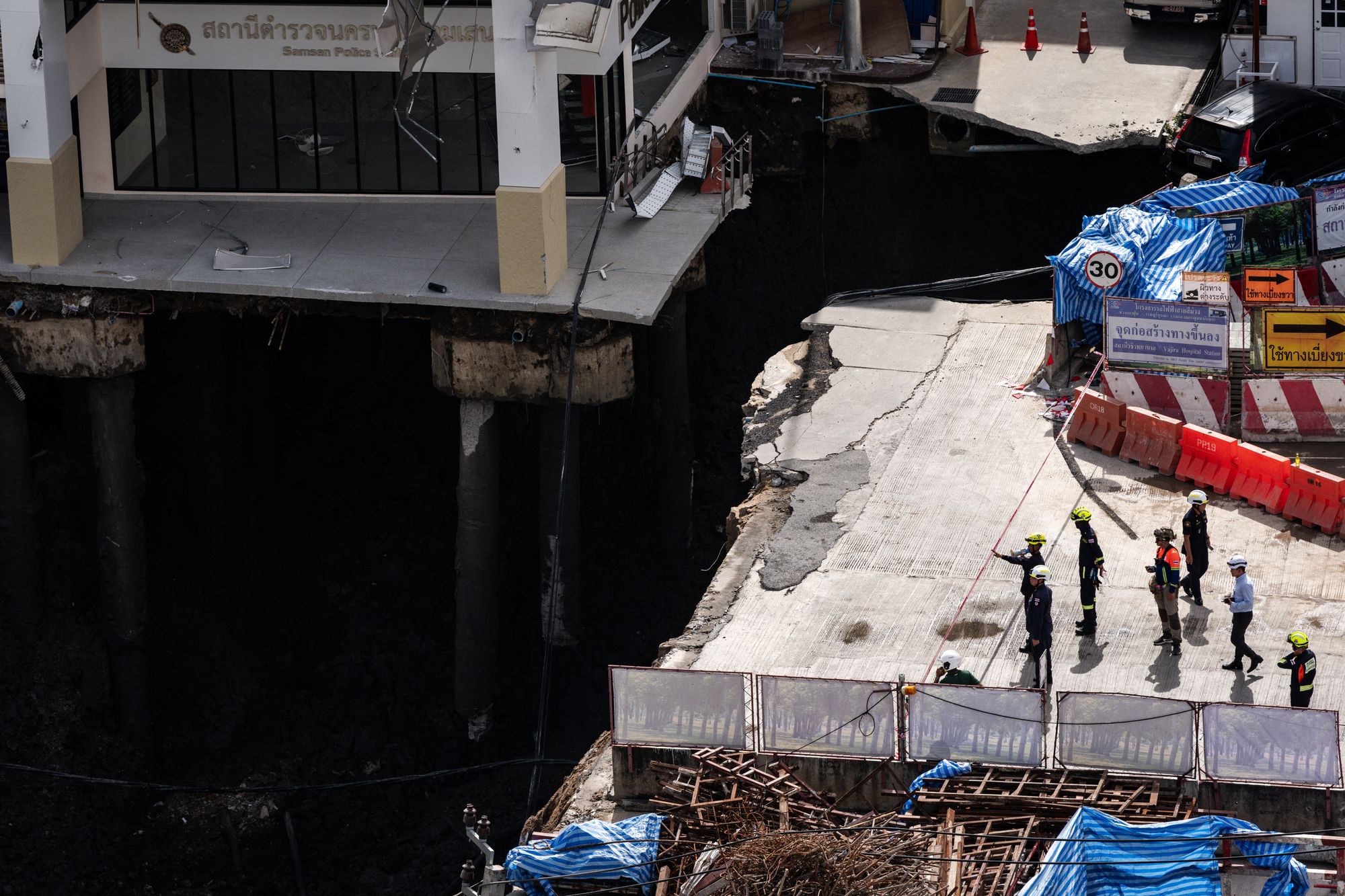A Pennsylvania grandmother was found dead last December after falling into a 30-foot deep sinkhole that opened into a long-abandoned coal mine.
Elizabeth Pollard, from Unity Township, had been looking for her cat Pepper when she fell, according to officials. The 64-year-old was remembered as a gardener who loved to take walks around the neighborhood with her five-year-old granddaughter.
“Her granddaughter was her world,” Pollard’s niece Tabitha Pollard told The Pittsburgh Tribune-Review. “Wherever she was, her granddaughter was with her.”
Sinkholes threaten 20 percent of land in the United States, according to the American Geosciences Institute, but the chances of a deadly encounter with one are slim.
But the number of sinkholes is on the rise globally due to climate change, which is causing more extreme weather swings from drought conditions to excessive rainfalls which causes land to behave unpredictably.


Now, Pennsylvania researchers say they have a way to detect the geological events before they strike using underground fiber optic cables that run across the country for high-speed Internet.
Sinkholes can be detected before they appear by recording the sound waves that bounce off the cables with a special tool, and then analyzing them for warning signs.
Sound waves made by cars or construction can be separated from those made by rocks, which hold clues about density and movement.
The tool was able to identify a potentially risky spot on Penn State University’s campus, although the researchers said people there weren’t in any imminent danger.
“We geoscientists often think of inputs such as everyday traffic as noise in the data. However, our research shows that the so-called ‘garbage noise’ is very useful,” Tieyuan Zhu, an associate professor of geophysics at the school, explained in a statement.
Zhu said the tool, known as the “distributed acoustic sensing interrogator,” would be both more affordable and effective than current methods. At the moment that’s a geophone which converts motion underground into an electrical signal, and can sell for up to a couple thousand dollars.
It’s unclear how the new tool would cost but it’s already been deployed to help prevent disasters in Pittsburgh. It also records more data than geophones, the scientists said.
Pennsylvania is one of a handful of states where sinkholes are more likely to occur. More than 3,600 sinkholes were reported in Pennsylvania alone in 2020, according to WPSD Local 6.
The hole where Pollard fell has since been filled with grout but the process can take months or even years.

Sinkholes happen more often in regions with rock that can be dissolved by groundwater. Both Pennsylvania and Florida are highly vulnerable because they rest on limestone, which is filled with holes and dissolves easily.
Texas, Alabama, Missouri, Kentucky, and Tennessee are also impacted and have experienced the most significant damage, Hong Yang, an environmental science professor at the U.K.’s University of Reading, told DW.com.

This year, sinkholes have also been reported in Virginia and California, swallowing cars and ripping up roadways. Internationally, a massive sinkhole hit a street in Bangkok, Thailand, earlier this month, forcing evacuations, according to The Associated Press.
Although there is no national tracking of sinkholes and related damage in the U.S., they have cost at least $300 million each year over the last 15 years, according to the U.S. Geological Survey.
The nation’s largest, spanning some 325 feet, happened in Alabama in 1972. Known as the “Golly Hole,” it did not harm people or property.

-performed-CPR-for-eight-minutes-after-hearing-a-crash-involving-driver-Jef.jpeg?trim=0,157,0,137&width=1200&height=800&crop=1200:800)

